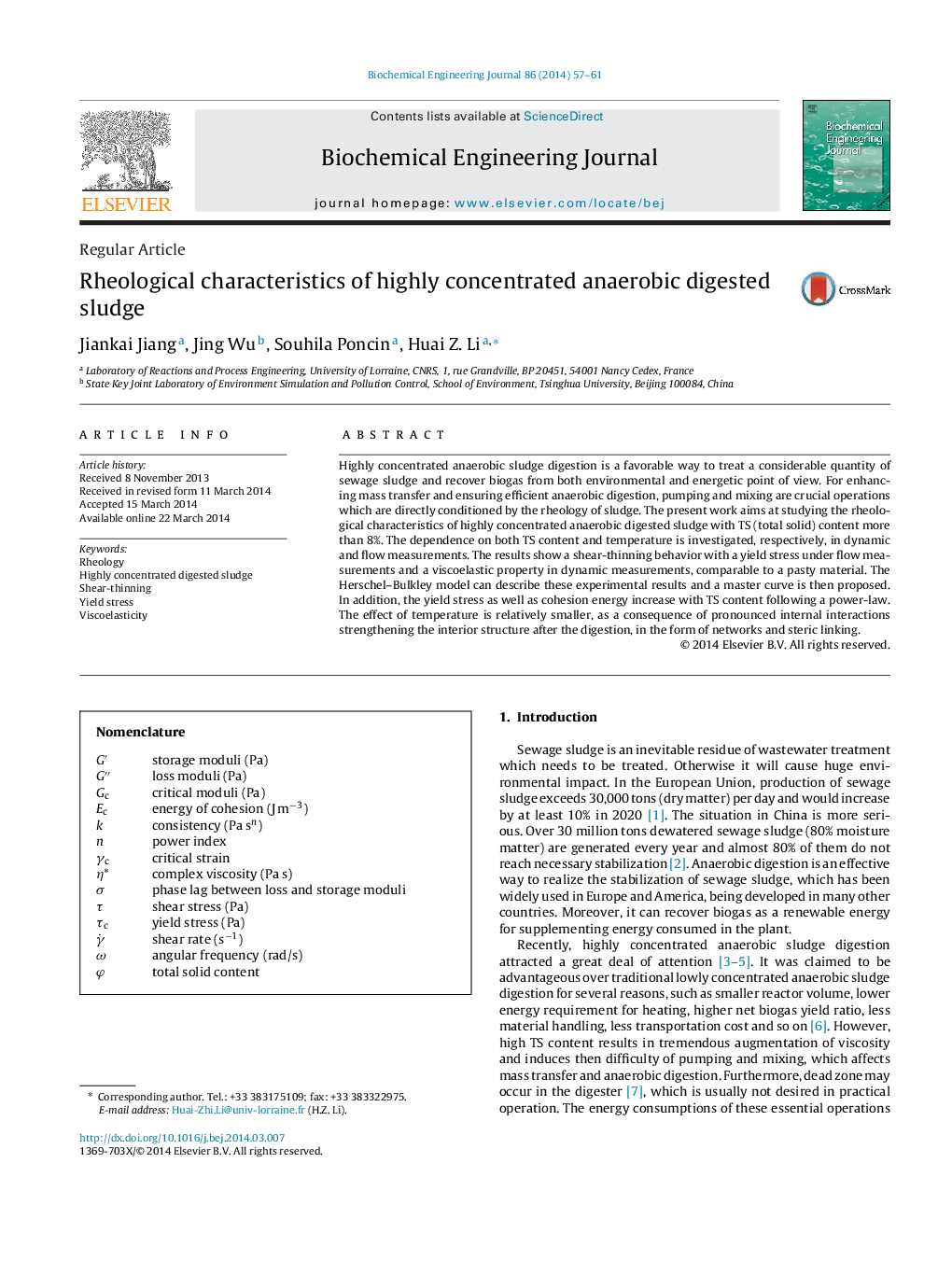| Article ID | Journal | Published Year | Pages | File Type |
|---|---|---|---|---|
| 3178 | Biochemical Engineering Journal | 2014 | 5 Pages |
•A shear-thinning behavior with a yield stress under flow measurements and a viscoelastic property in dynamic measurements.•The influence of total solid content is more significant rather than temperature.•Interactive networks and intense steric linking strengthen and stabilize the sludge structure after anaerobic digestion.
Highly concentrated anaerobic sludge digestion is a favorable way to treat a considerable quantity of sewage sludge and recover biogas from both environmental and energetic point of view. For enhancing mass transfer and ensuring efficient anaerobic digestion, pumping and mixing are crucial operations which are directly conditioned by the rheology of sludge. The present work aims at studying the rheological characteristics of highly concentrated anaerobic digested sludge with TS (total solid) content more than 8%. The dependence on both TS content and temperature is investigated, respectively, in dynamic and flow measurements. The results show a shear-thinning behavior with a yield stress under flow measurements and a viscoelastic property in dynamic measurements, comparable to a pasty material. The Herschel–Bulkley model can describe these experimental results and a master curve is then proposed. In addition, the yield stress as well as cohesion energy increase with TS content following a power-law. The effect of temperature is relatively smaller, as a consequence of pronounced internal interactions strengthening the interior structure after the digestion, in the form of networks and steric linking.
